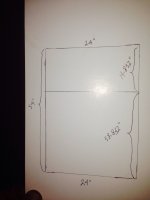Wondering about open baffle from the last couple of months, I finally decided to give them a try, so I bought a pair of Fostex FF85wk and put inside a rectangular baffle 20" height and 12" wide, very close to the golden rectangle
As soon as I connected the two raw test article to my Trends Audio 10.1, it became immediately clear to me that I love the open baffle sound vs boxed speakers, in this case further enhanced by the coherence of the little fullrange
Bass, below 200Hz, was compromised of course, but the rest of the spectrum was soooo clear, sweet, open and detailed, only sound stage and imaging suffered a bit, I thought due the wide baffle
So I decided to try different baffle shapes and test how the edge diffraction affects imaging and sound signature
First I simply moved the fostex off center in the same rectangular baffle, using the Fibonacci sequence to determine the exact offset from one side edge, then the upper and finally the other side.
Things audibly improved, a bit
Then I cut the upper half of the baffle following the Fibonacci spiral shape, the same golden spiral present in nature in many life form, with the fostex in the spiral center
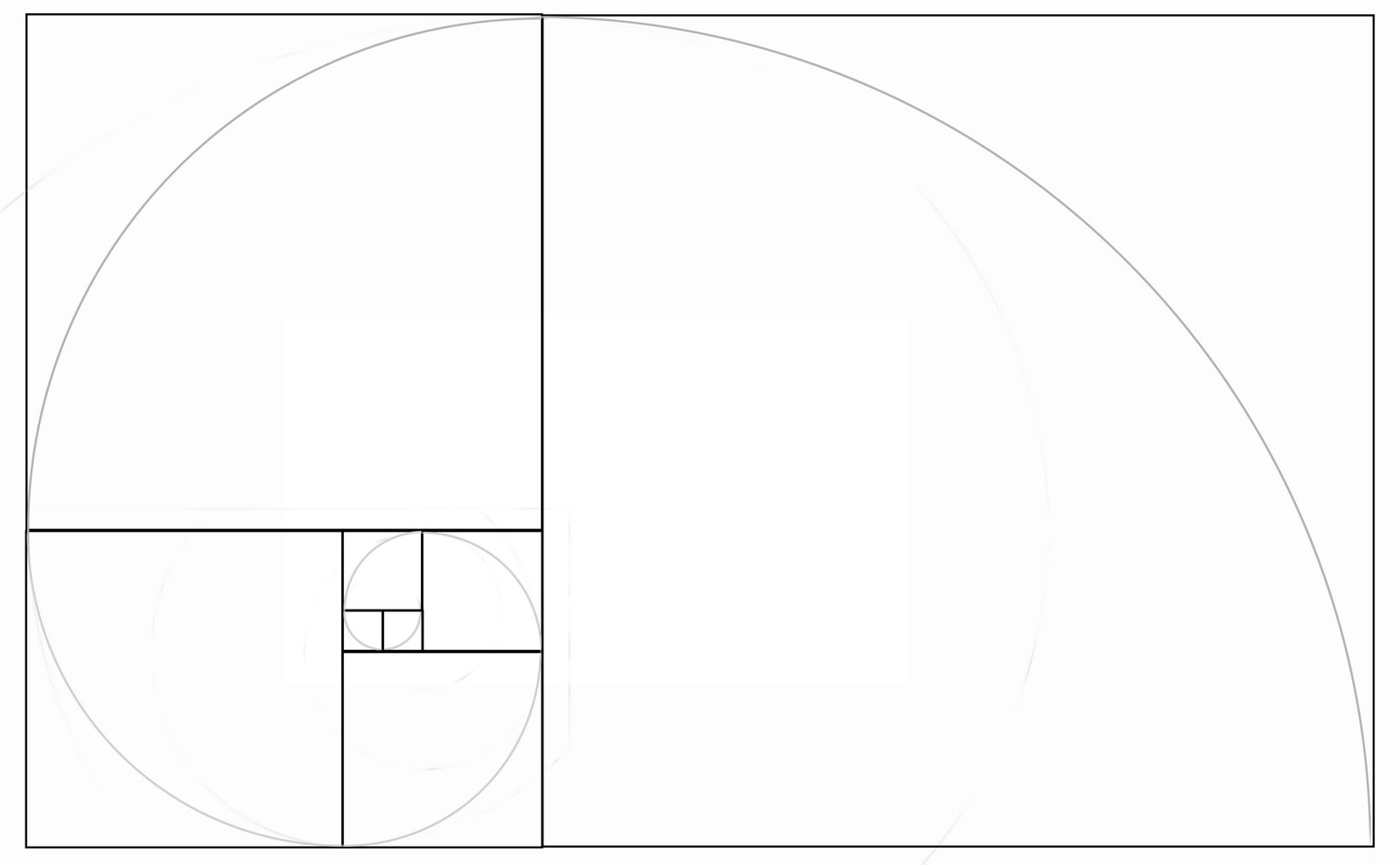
Bingo!!
Things improved further, this time a lot !!!
Imaging improved dramatically, but also sound signature changed for the better, all traces of peak and dip along the spectrum due to edge difraction disappeared completely
To make sure it wasn't a placebo, I compared the spiral to other two shapes
First the same 12"x20" rectangle with the upper edge rounded, with the fostex placed centered in the baffle but off the circle center: this sounded reasonably good, but not as good as the spiral and less focused
Second, I cut away other material, narrowing the baffle to a bullet shape: imaging improved, but the lower mids became thinner, unbalancing the frequency response to the upper mids

Tried again the golden spiral, yeah, that one sound right in every aspect, I stay with it
Next step was to add the right weight to the bass, so I added an Eminence Alpha 8a, cut at 150Hz with a passive second order LC filter
The eminence proved to be the right partner for the little fostex, giving to these loudspeakers the right balance all over the spectrum; bass will be never shaking or kicking, but wonderfully crisp and natural, without any boominess tipical of boxed speakers
That's it, we have the Nautilus
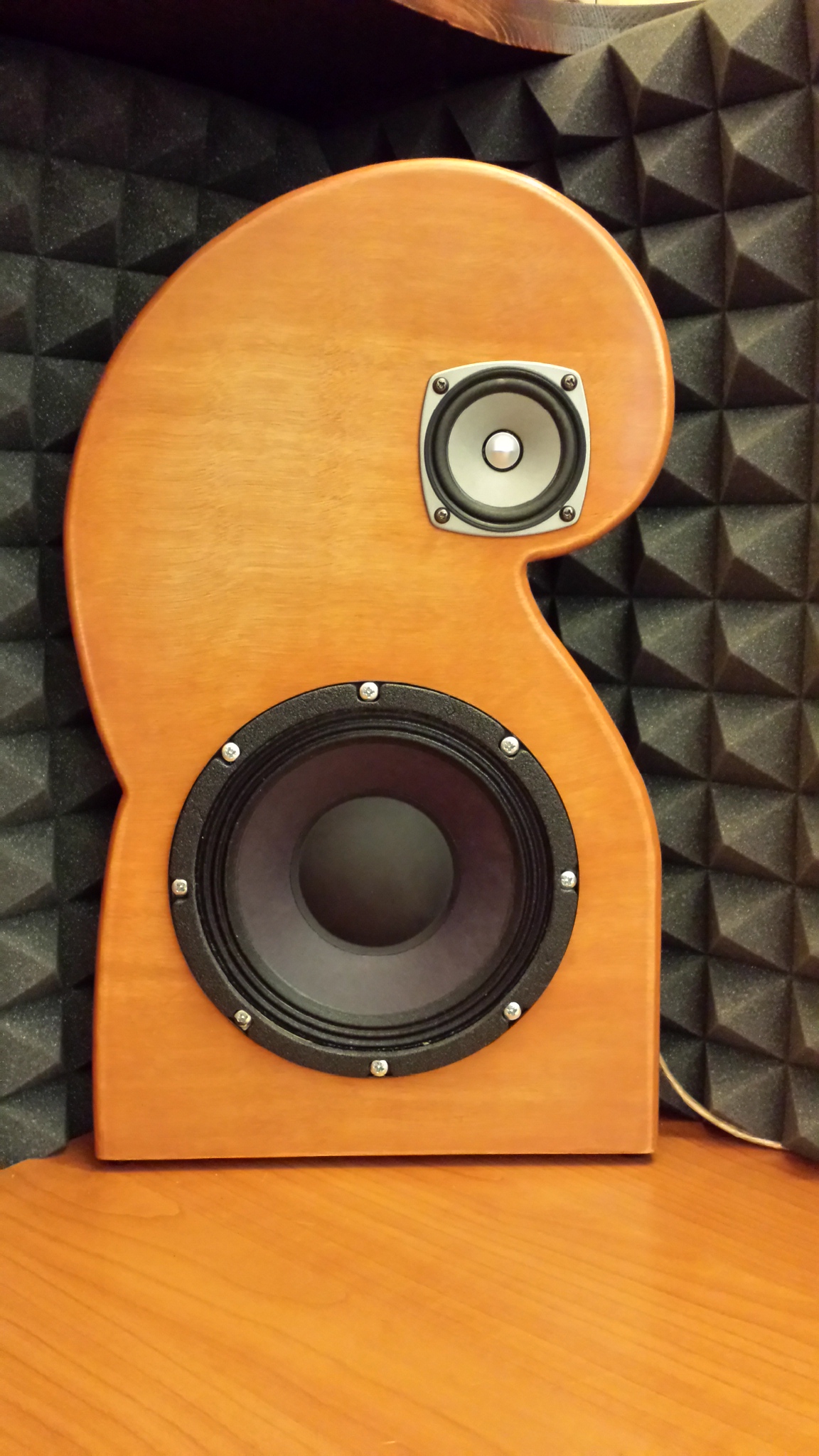


Probably would be better biamped with an active crossover, but for the moment I'm happy with the result
As soon as I connected the two raw test article to my Trends Audio 10.1, it became immediately clear to me that I love the open baffle sound vs boxed speakers, in this case further enhanced by the coherence of the little fullrange
Bass, below 200Hz, was compromised of course, but the rest of the spectrum was soooo clear, sweet, open and detailed, only sound stage and imaging suffered a bit, I thought due the wide baffle
So I decided to try different baffle shapes and test how the edge diffraction affects imaging and sound signature
First I simply moved the fostex off center in the same rectangular baffle, using the Fibonacci sequence to determine the exact offset from one side edge, then the upper and finally the other side.
Things audibly improved, a bit
Then I cut the upper half of the baffle following the Fibonacci spiral shape, the same golden spiral present in nature in many life form, with the fostex in the spiral center
Bingo!!
Things improved further, this time a lot !!!
Imaging improved dramatically, but also sound signature changed for the better, all traces of peak and dip along the spectrum due to edge difraction disappeared completely
To make sure it wasn't a placebo, I compared the spiral to other two shapes
First the same 12"x20" rectangle with the upper edge rounded, with the fostex placed centered in the baffle but off the circle center: this sounded reasonably good, but not as good as the spiral and less focused
Second, I cut away other material, narrowing the baffle to a bullet shape: imaging improved, but the lower mids became thinner, unbalancing the frequency response to the upper mids
Tried again the golden spiral, yeah, that one sound right in every aspect, I stay with it
Next step was to add the right weight to the bass, so I added an Eminence Alpha 8a, cut at 150Hz with a passive second order LC filter
The eminence proved to be the right partner for the little fostex, giving to these loudspeakers the right balance all over the spectrum; bass will be never shaking or kicking, but wonderfully crisp and natural, without any boominess tipical of boxed speakers
That's it, we have the Nautilus
Probably would be better biamped with an active crossover, but for the moment I'm happy with the result
Attachments
:smash
Can't load photo at this time. But if you start with a 24" wide baffle measurement, multiply it by 1.618. This is 38.832.
Multiply 24 x0.618. This is 14.832.
So there are two golden ratio rectangles, 24x14.832", and 24x38.832".
When these are stacked long axis of the big one with the short axis of the small one, a 24x 53.664 panel is created.
With the addition of 5 1/4" "wings behind the sides of the baffle, this is very close to a 1-4-9 ratio of depth to width to height of my horned open baffle.
Sorry I'm not able to send a diagram or photo.
Most people like the looks of this panel ratio.
And it wastes very little from a 4x8 plywood sheet, with the off cuts well suited to supply the base, top wing, and nice brace for the woofer motor.
Can't load photo at this time. But if you start with a 24" wide baffle measurement, multiply it by 1.618. This is 38.832.
Multiply 24 x0.618. This is 14.832.
So there are two golden ratio rectangles, 24x14.832", and 24x38.832".
When these are stacked long axis of the big one with the short axis of the small one, a 24x 53.664 panel is created.
With the addition of 5 1/4" "wings behind the sides of the baffle, this is very close to a 1-4-9 ratio of depth to width to height of my horned open baffle.
Sorry I'm not able to send a diagram or photo.
Most people like the looks of this panel ratio.
And it wastes very little from a 4x8 plywood sheet, with the off cuts well suited to supply the base, top wing, and nice brace for the woofer motor.
Attachments
What is the significance of the Fibonacci spiral shape you mention? How far down in frequency do you think this effects your design?
Honestly, the Fibonacci sequence and then the golden spiral were just an enlightenment without any scientific basis.
I was just thinking about how to reduce the edge diffraction, and to me an asymmetric shape with a curvature that spread continuosly the distance from speaker to edge (and hence wavelenght) would have been the right solution, and suddenly golden spiral came to mind.
Why not? It was just a bet, and to my ears was the right one
Moreover, why we continue to stick to squared loudspeakers (boxed or open baffled) when I can recall no one music instrument with squared shape?
Unfortunately I can't provide any measurement, I just can tell you that is the most musical piece of wood with speaker that I've ever heard, just try yourself, is quite easy and I'd like to know more opinions
Deriving the baffle shape from a famously-named spiral is not doing anything special in this case. Anytime you place a driver near an edge of an open baffle you get the benefit that much of the amplitude of the dipole oscillations is reduced, especially in the case of your small fullranger. This is the same whether your baffle is spiral, ziggurat, pyrimidal, rectangular, or whatever shaped.
The proximity of the driver to the edges of the baffle is influencing the dipole radiation pattern. That is all. Enjoy.
The proximity of the driver to the edges of the baffle is influencing the dipole radiation pattern. That is all. Enjoy.
This is the same whether your baffle is spiral, ziggurat, pyrimidal, rectangular, or whatever shaped
Hello Charlie, thanks for the valuable technical contribute, but I have to disagree with the above statement
I tried many different shapes, both curved or squared, centered or near the edge, and every one does sound different, and to me, the spiral gives the most correct and natural presentation
Maybe it's a placebo induced by the nice looking woodwork
Not just that. The frequency of the dipole peak is at a single point if the baffle width "d" is equidistant across 360 degrees. If "d" is continuously varying throughout the 360 degrees, the dipole peak is in effect happening across a broad range.Deriving the baffle shape from a famously-named spiral is not doing anything special in this case. Anytime you place a driver near an edge of an open baffle you get the benefit that much of the amplitude of the dipole oscillations is reduced, especially in the case of your small fullranger. This is the same whether your baffle is spiral, ziggurat, pyrimidal, rectangular, or whatever shaped.
The proximity of the driver to the edges of the baffle is influencing the dipole radiation pattern. That is all. Enjoy.
Whether this is ultimately good or bad is not something I care to think about, but it just is. Although, the effect is also achieved, albeit to a lesser extent, simply by using a rectangular baffle.
Polar graphs would be of interest here. edge simulator could too, but I'm too lazy to plot that many points...
If "d" is continuously varying throughout the 360 degrees, the dipole peak is in effect happening across a broad range
You explained better than me the idea behind my project
Last edited:
You guys are now mixing dipole diffraction/summation and edge diffractions. Charlie is explaining the first but your spiral baffle works for the latter. Because with your baffle width dipole radiation is possible only roughly say up to 1000hz. Edge diffractions make most of the ripples above it, and you can hear changes in them.
Diffraction peak reduction, either dipole or edge, was my big concern
Initially I believed a very narrow or no baffle at all would be the best solution, but in my experiments I found this configuration sound too dry and sterile to my ears, albeit focus and soundstage definition were great.
Right or wrong my assumptions can be, I stay with the spiral because every time I listen them, I enjoy a very pleasant, balanced and correct music presentation, with a well defined and focused sound stage.
I've been also lucky to find the right match with the eminence 8A to fullfill nicely the bass/mid bass
Initially I believed a very narrow or no baffle at all would be the best solution, but in my experiments I found this configuration sound too dry and sterile to my ears, albeit focus and soundstage definition were great.
Right or wrong my assumptions can be, I stay with the spiral because every time I listen them, I enjoy a very pleasant, balanced and correct music presentation, with a well defined and focused sound stage.
I've been also lucky to find the right match with the eminence 8A to fullfill nicely the bass/mid bass
Hi,
Its an interesting but flawed idea. Whilst baffle shape affects the
response it does this by chucking away driver excursion below
the baffle response peak.
In all respects putting a driver near the edge of a OB severely
limits the drivers maximum SPL and distortion levels in the
frequency areas the rest of the baffle affects the response.
Its pretty simple and always has been. Take a 20" wide baffle :
Optimum driver position is at ear level or the equivalent for
an angled front baffle. The driver should be offset to 62%
of the width to smooth the hump, its centre ~ 12" and 8"
to the two edges.
The height of the top edge above the driver centre is
ideally 20" to minimise the baffle loss and to lower and
smooth the baffle hump, the alternative is 10" which
raises and makes the baffle hump a bit peakier.
Rounding the baffle makes it worse, reducing the
variation of driver distance to all the baffle edges,
and reducing the mean distances, which weighted
towards the shorter distance causes baffle loss.
Both drivers in a FR + bass unit are subject to the baffle
hump and good OB design allows you to use the x/o
to fix the hump rather driver filters, as you do not
want to (and can't well) use the FR with baffle loss.
The exception being sealed bass and a narrow OB.
Here you can't fix it in the x/o, you need a trap circuit.
rgds, sreten.
Its an interesting but flawed idea. Whilst baffle shape affects the
response it does this by chucking away driver excursion below
the baffle response peak.
In all respects putting a driver near the edge of a OB severely
limits the drivers maximum SPL and distortion levels in the
frequency areas the rest of the baffle affects the response.
Its pretty simple and always has been. Take a 20" wide baffle :
Optimum driver position is at ear level or the equivalent for
an angled front baffle. The driver should be offset to 62%
of the width to smooth the hump, its centre ~ 12" and 8"
to the two edges.
The height of the top edge above the driver centre is
ideally 20" to minimise the baffle loss and to lower and
smooth the baffle hump, the alternative is 10" which
raises and makes the baffle hump a bit peakier.
Rounding the baffle makes it worse, reducing the
variation of driver distance to all the baffle edges,
and reducing the mean distances, which weighted
towards the shorter distance causes baffle loss.
Both drivers in a FR + bass unit are subject to the baffle
hump and good OB design allows you to use the x/o
to fix the hump rather driver filters, as you do not
want to (and can't well) use the FR with baffle loss.
The exception being sealed bass and a narrow OB.
Here you can't fix it in the x/o, you need a trap circuit.
rgds, sreten.
Last edited:
Thank you for the valuable post, very interesting
I'm sure you are right in every point of your argumentation, in fact, when I began experimenting with OB, I've started from the classic large rectangular baffle, with driver mounted off the center as you stated
but
as matter of fact, between the various shapes I've tried, rectangular, bell, both wide and narrow, and finally the spiral; to my ears, the latter is the winner, no way
All the other shapes color the sound in some way, add or hide something from the music message, and the spiral was the most neutral of the set
I posted my design in the hope someone else could test this configuration and send me feedback about their impressions, maybe some measurements, or provide any clue to explain why I feel (maybe I am the only one ) the spirals are so natural sounding
) the spirals are so natural sounding
I'm sure you are right in every point of your argumentation, in fact, when I began experimenting with OB, I've started from the classic large rectangular baffle, with driver mounted off the center as you stated
but
as matter of fact, between the various shapes I've tried, rectangular, bell, both wide and narrow, and finally the spiral; to my ears, the latter is the winner, no way
All the other shapes color the sound in some way, add or hide something from the music message, and the spiral was the most neutral of the set
I posted my design in the hope someone else could test this configuration and send me feedback about their impressions, maybe some measurements, or provide any clue to explain why I feel (maybe I am the only one
This fun to think about and I am quick to salute anyone that has actually gotten off his/her butt and built something. I do not trust someone else's subjective evaluation of sound. I look for something more objective. This shape (and many others) makes me want for more analytical tools. Playing with the Edge program has been fun but unless I am wrong. you cannot do shapes like this. All shapes are four-sided, straight-line constructed objects. Is there an alternative? Is there one to view the dipole behavior vs shape?
I do not trust someone else's subjective evaluation of sound. I look for something more objective
I am with you, it would be very interesting to gather some analytical data, possibly from real hardware with a calibrated microphone
I'm not saying my Nautilus are superior to other designs, simply they match my taste better than others, and in the end, this is the ultimate goal of our hobby
Anyway, if nothing else, about WAF factor the Nautilus are second to none
or provide any clue to explain why I feel (maybe I am the only one) the spirals are so natural sounding
As one of the other posters noted, the diffraction artifacts are going to be monotonically smooth.
there's a bunch more math there which my head is not up to at this hour. Also with slightly peaky drivers the gentle baffle step roll off may also compensate for this difficult-to-eq problem.
But my brain is on strike
- Status
- This old topic is closed. If you want to reopen this topic, contact a moderator using the "Report Post" button.
- Home
- Loudspeakers
- Full Range
- Open baffle Nautilus: the Fibonacci solution to edge diffraction
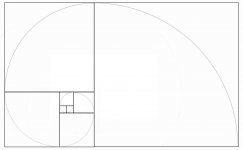
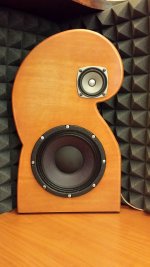
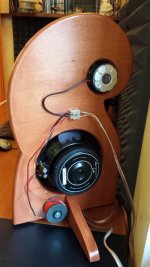
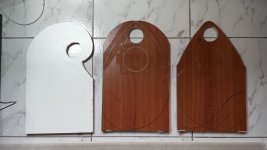
![20140215_104851[1].jpg](/community/data/attachments/367/367162-2a3fa0781f67763613e799c1b63d6c09.jpg)
